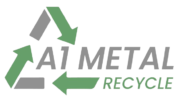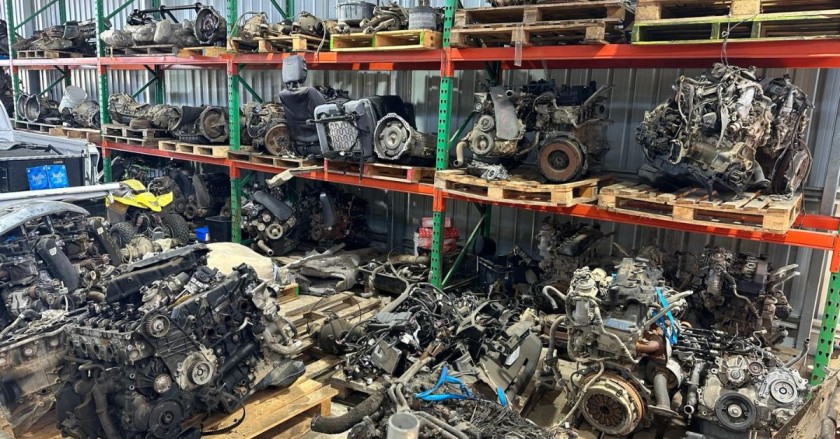Scrap metal recycling is one of the most effective ways to reduce waste, conserve natural resources, and support environmental sustainability. Whether you’re a homeowner cleaning out the garage or a business managing industrial waste, understanding how scrap metal recycling works can help you make informed decisions. In this comprehensive blog, we’ll cover the most frequently asked questions about scrap metal recycling, providing detailed answers that can help beginners and experienced recyclers alike.
What is Scrap Metal Recycling?
Scrap metal recycling is the process of recovering and reprocessing metals from discarded products, manufacturing scrap, or obsolete equipment. These metals are melted down and reused to create new materials and products, reducing the need for virgin ore extraction.
Recycling helps lower greenhouse gas emissions, conserves natural resources, and minimises landfill usage.
Why is Scrap Metal Recycling Important?
There are several key reasons why scrap metal recycling is crucial:
- Environmental Benefits: Recycling metal uses less energy than producing new metal from raw materials, reducing carbon emissions and air pollution.
- Economic Value: Recycled metals can be sold for profit, creating jobs and supporting the local economy.
- Resource Conservation: Metals like aluminum, copper, and steel are finite resources. Recycling extends their lifespan and reduces the need for mining.
- Landfill Reduction: Keeping metals out of landfills reduces pollution and saves space for non-recyclable waste.
What Types of Scrap Metal Can Be Recycled?
Scrap metal is generally categorised into two types:
1. Ferrous Metals
- Contain iron
- Magnetic
- Examples: Steel, Cast Iron, Wrought Iron
- Common sources: Appliances, vehicles, construction materials
2. Non-Ferrous Metals
- Do not contain iron
- Not magnetic
- Examples: Aluminum, Copper, Brass, Lead, Zinc
- Common sources: Electrical wiring, plumbing pipes, soda cans, car radiators
Precious metals like gold, silver, and platinum can also be recycled but are typically handled separately due to their high value.
How is Scrap Metal Collected and Processed?
1. Collection
Scrap is collected from households, businesses, manufacturing plants, demolition sites, and municipal waste.
2. Sorting
Metal is sorted manually or with magnets and sensors to separate ferrous from non-ferrous metals.
3. Processing
The metal is shredded or crushed to increase surface area and improve efficiency during melting.
4. Melting
Sorted metal is melted in a large furnace. Each metal type requires a different temperature.
5. Purification
Electrolysis or other purification techniques are used to remove contaminants.
6. Solidifying
The molten metal is cooled and solidified into bars, sheets, or coils for reuse.
How Can I Identify Scrap Metal Types?
Here are a few tips:
- Use a magnet: If it sticks, it’s likely ferrous (steel or iron).
- Color and weight:
- Copper: Reddish-brown, heavy
- Aluminum: Silver-white, light
- Brass: Yellowish, heavier than aluminum
- Copper: Reddish-brown, heavy
If you’re unsure, most scrap yards have equipment to test and grade metals.
Can I Make Money from Scrap Metal?
Yes, scrap metal can be a source of extra income. Prices fluctuate based on market demand, but here’s a general idea:
| Metal Type | Average Price per Pound (2025)* |
| Copper | $3.50 – $4.00 |
| Aluminum | $0.50 – $0.75 |
| Brass | $2.00 – $2.50 |
| Steel | $0.10 – $0.15 |
*Note: Prices vary by region and condition of the material.
To maximise profit:
- Separate metals before selling
- Clean the metal (remove plastic or non-metal parts)
- Check local prices at multiple recycling centers
Where Can I Recycle Scrap Metal?
You can recycle scrap metal at:
- Local scrap metal yards or metal recyclers
- Municipal recycling centers
- Specialized recycling companies (especially for industrial or large-scale scrap)
- Some appliance retailers (they may offer recycling for old units)
Be sure to call ahead to confirm what types of metals they accept.
Are There Safety Tips for Handling Scrap Metal?
Absolutely. Recycling metal can be hazardous without the right precautions:
- Wear gloves to avoid sharp edges and rust
- Use protective clothing and goggles for larger jobs
- Be cautious with electrical parts — unplug and discharge before dismantling
- Avoid inhaling fumes from treated or painted metal
- Check for hazardous materials like lead or mercury in electronics
Can I Recycle Electronics and Appliances?
Yes, but not all recycling centers accept them. These items often contain valuable metals like copper and aluminum but also may have hazardous components.
Common recyclable appliances:
- Refrigerators
- Washing machines
- Microwaves
- Air conditioners
E-waste recycling centers specialise in electronic items like computers, phones, and TVs.
What Happens to Recycled Metal?
Once processed, recycled metals are reused in a variety of ways:
- Construction: Beams, rebar, roofing
- Automotive: Car frames, parts, wiring
- Consumer goods: Cans, electronics, appliances
- Aerospace and transportation: Aircraft parts, train tracks
- Packaging: Foil, containers, bottling
This circular economy helps reduce the need for new material production.
Final Thoughts
Scrap metal recycling is more than just tossing an old appliance into a bin — it’s a vital part of a sustainable future. Whether you’re recycling a few aluminum cans or scrapping old car parts, every bit makes a difference.
If you’re interested in starting your own recycling routine or learning more about how to profit from scrap, visit your local recycling center and start asking questions. The benefits — financial and environmental — are well worth it.



